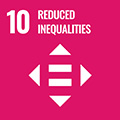- Docente: Natacha Sarah Alexandra Niemants
- Credits: 5
- SSD: L-LIN/04
- Language: French
- Teaching Mode: Traditional lectures
- Campus: Forli
- Corso: First cycle degree programme (L) in Intercultural and Linguistic Mediation (cod. 8059)
Learning outcomes
The student knows the problems linked with dialogue interpreting and can opt for ethically correct behaviour - s/he can use basic dialogue interpreting strategies
Course contents
This course will introduce the students to the basic concepts of Conversation Analysis so as to clarify the idea of talk as interaction between participants and to show the different levels of analysis of oral interactions (interpersonal relation, turn-taking, coherence). An important role will be played by the students learning to learn, that is by their ability to autonomously take charge of their own learning starting from their oral production as well as from authentic audio-visual materials.
The course is complemented by the French Language Lectureship (20 hours in the first semester and 20 hours in the second) held by Marie-Line Zucchiatti (https://www.unibo.it/sitoweb/marieline.zucchiatti), with 70% compulsory attendance.
The course deals with phonetics, grammar, and vocabulary from a translation perspective and through various types of practical exercises, including comprehension exercises and the production of oral texts.
Readings/Bibliography
ASTON G. (1988) Learning comity: An approach to the description and pedagogy of interactional speech. CLUEB: Bologna.
BALLARDINI E. (1998) “La traduzione a vista nella formazione degli interpreti”. inTRAlinea 1. Disponibile all’indirizzo http://www.intralinea.org/archive/article/1611
BARALDI C. & GAVIOLI L. (2012) "Introduction: Understanding coordination in interpreter-mediated interaction", in BARALDI C. & GAVIOLI L. (dir.), Coordinating participation in dialogue interpreting. Amsterdam/Philadelphia: John Benjamins. 1-22.
BARALDI C. & GAVIOLI L. (2015) “Mediation”. In F. Pöchhacker (dir.), Routledge Encyclopedia of Interpreting Studies. London: Taylor & Francis. 246-249.
BARALDI C. & GAVIOLI L. (2019) La mediazione linguistico-culturale nei servizi sanitari: interazione ed efficacia comunicativa. Milano: Franco Angeli.
BLANCHE-BENVENISTE C. (2010) Approches de la langue parlée. Paris: Ophrys.
BOULTON A. & TYNE H. (2014) Des documents authentiques aux corpus. Paris : Didier.
CELOTTI N. (2013) “Droits de l’homme – droits humains – droit à la traduction et à l’interprétation: un défi pour les langues”. In M. De Gioia (dir.), Autour de la traduction juridique. Padova: PUP. 47-60.
CHESSA F. (2012) Interpretazione dialogica. Le competenze per la mediazione linguistica. Roma: Carocci.
CIRILLO L. & NIEMANTS N. (dir.) (2017) Teaching dialogue interpreting. Research-based proposals for higher education. Amsterdam/Philadelphia: John Benjamins.
DELIZEE A. (2015) Emergence et professionnalisation de l’interprétation communautaire en Belgique francophone. humanOrg Working Paper 2015/02. humanOrg, Institut de recherche en développement humain et des organisation, Université de Mons.
DE PIETRO J., MATTHEY M. & PY B. (1989) "Acquisition et contrat didactique: Les séquences potentiellement acquisitionelles dans la conversation exolingue", in WEIL D. & FUGIER H. (dir.), Actes du Troisième Colloque Régional de Linguistique, Université des sciences humaines et Université Louis Pasteur, Strasbourg : 99-124.
DETEY S., RACINE I., KAWAGUCHI Y. & EYCHENNE J. (dir.) (2017) La prononciation du français dans le monde: Du natif à l’apprenant. Paris : CLE International.
ECO U. (2003) Dire quasi la stessa cosa. Milano: Bompiani.
FALBO C. (2013) “’Interprete’ et ‘mediatore linguistico-culturale’: deux figures professionnelles opposées?”. In G. AGRESTI & C. SCHIAVONE (dir.), Plurilinguisme et monde du travail: Professions, opérateurs et acteurs de la diversité linguistique. Roma: Aracne. 253-270.
FALBO C. (2017) "Les oraux des interprètes: Un terrain particulier d’observation", in Repères DoRiF 12, http://www.dorif.it/ezine/ezine_articles.php?art_id=338
FALBO C. & VIEZZI M. (dir.) (2014) Traduzione e interpretazione per la società e le istituzioni. Trieste: EUT.
FOGAZZARO E. & GAVIOLI L. (2004) “L'interprete come mediatore: riflessioni sul ruolo dell'interprete in una trattativa d'affari”. In BERSANI BERSELLI G., G. MACK & D. ZORZI (dir.), Linguistica e interpretazione. CLUEB: Bologna. 169-188.
GALAZZI E. & JULLION M.C. (2001) “La compréhension orale en milieu professionnel: imaginaire et réalité”. In M. MARGARITO, E. GALAZZI & M. LEBHAR Politi (dir.), Oralité dans la parole et dans l'écriture – Oralità nella parola e nella scrittura. Torino: Edizioni Librarie Cortina. 221-258.
GALAZZI E. (2015) “Du locuteur natif à l’étranger expert: Quel(s) modèle(s) de prononciation pour les apprenants de FLE dans la société globalisée ?”. In BOREK-DOHALSKA M. & SUKOVA VYCHOPNOVA K. (dir.), Didactique de la phonétique et phonétique en didactique du FLE. Prague : Editions Karolinum. 69-77.
GALAZZI E. & PATERNOSTRO R. (2016) “Locuteurs de FLE en contact: Un défi pour la didactique de la parole aujourd’hui”. Le français dans le monde. Recherches & Applications 60: 27-34.
GALAZZI E. & JAMET M. (dir.) (2017), Les z'oraux - Les français parlés entre sons et discours, numéro de Repères DoRiF 12, http://www.dorif.it/ezine/ezine_articles.php?art_id=354
GAVIOLI L. (dir.) (2009) La mediazione linguistico-culturale: Una prospettiva interazionista. Perugia: Guerra Edizioni.
GAVIOLI L. & ASTON G. (2001) “Enriching reality: Language corpora in language pedagogy”. ELT Journal 55(3): 238-246.
GARZONE G. & J. ARCHIBALD (dir.) (2014) Definire la mediazione linguistica e culturale Un approccio multidisciplinare – Defining Linguistic and Cultural Mediation A Multidisciplinary Approach. Special issue, Lingue Culture Mediazioni Languages Cultures Mediation 1(1-2).
GROUPE ICOR (2007) “L’étude des particules à l’oral dans différents contextes à partir de la banque de données de Corpus de Langue Parlée en Interaction CLAPI”. In Actes des 5èmes Journées de Linguistique de Corpus JLC5, Lorient, septembre 2007, <http://icar.univ-lyon2.fr/projets/corinte/bandeau_droit/ressources.htm>
GROUPE ICOR (2010) “Grands corpus et linguistique outillée pour l’étude du français en interaction (plateforme CLAPI er corpus CIEL)”. Pratiques 147/148: 17-34.
KERBRAT-ORECCHIONI C. (2005) Le discours en interaction. Paris: Armand Colin.
LADMIRAL J. (2015) Sourcier ou cibliste. Les profondeurs de la traduction. Paris: Les Belles Lettres.
LADMIRAL J. & LIPIANSKY E. (2015) La communication interculturelle. Paris: Les Belles Lettres.
LEE R. & LLEWELLYN-JONES P. (2014) Redefining the Role of the Community Interpreter: The Concept of Role-space. Carlton-le-Moorland, UK: SLI Press.
LONDEI D., MILLER D.R. & PUCCINI P. (dir.) (2006) Insegnare le lingue/culture oggi: Il contributo dell'interdisciplinarietà. Bologna: Asterisco.
LUATTI L. (2011) Mediatori atleti dell’incontro. Gussago: Vannini
MACK G. & RUSSO M. (dir.) (2005) Interpretazione di trattativa : la mediazione linguistico-culturale nel contesto formativo e professionale. Milano: Hoepli.
MASON I. (2006) “On mutual accessibility of contextual assumptions in dialogue interpreting”. Journal of Pragmatics 38: 365.
MERLINO S. & MONDADA L. (2013) “La traduction comme pratique multiforme imbriquée dans l’activité située”. In D. LONDEI & L. SANTONE (dir.), Entre linguistique et anthropologie. Observations de terrain, modèles d’analyse et expériences d’écriture. Bern et al. : Peter Lang. 205-232.
NASI, F. (2010) Specchi comunicanti. Milano: Medusa.
NAVARRO E., BENAYOUN J. & HUMBLEY J. (2016) “Une terminologie de référence pour l’interprétation-médiation”. In DE GIOIA M. & MARCON M. (dir.), Approches linguistiques de la médiation. Limoges: Lambert-Lucas. 66-83.
NIEMANTS N. (2015) L’interprétation de dialogue en milieu médical. Du jeu de rôle à l’exercice d’une responsabilité. Roma: Aracne.
NIEMANTS N. (2016) “Médiation à l’hôpital: De l’analyse conversationnelle aux retombées éducatives”. In M. DE GIOIA & M. MARCON (dir.), Approches linguistiques de la médiation. Limoges: Lambert-Lucas. 91-116.
NIEMANTS N. & CIRILLO L. (2016) “Il role-play nella didattica dell’interpretazione dialogica: Focus sull’apprendente.” In R. GRASSI & C. ANDORNO (dir.), Dinamiche dell’interazione: Testo, dialogo, applicazioni educative, Atti del XVI Congresso AItLA. 301-317.
NIEMANTS N. (2018) “L’interprétation des français parlés en interaction”. InTRAlinea, numero speciale a cura di L. Anderson, L. Gavioli e F. Zanettin intitolato Translation And Interpreting for Language Learners (TAIL), in pubblicazione congiunta presso la rivista InTRAlinea e la collana Studi AItLA, dell’Associazione Italiana di Linguistica Applicata, http://www.intralinea.org/specials/article/2310
PALLOTTI G. (2002) “La classe dans une perspective écologique de l’acquisition”. Acquisition et Interaction en Langue Etrangère16: 165-197.
PÖCHHACKER, F. (2008) «Interpreting as mediation». In C. Valero-Garcés & A. Martin (eds.) Crossing borders in community interpreting. Amsterdam/Philadelphia: John Benjamins. 9-26.
POINTURIER S. (2016) Théories et pratiques de l’interprétation de service public. Paris: Presses Sorbonne Nouvelle.
RASCHI N. (2015) “Sur la variation linguistique en Afrique: Le camfranglais au Cameroun”. In BENELLI C. & SAGGIOMO C. (dir.), Un coup de dés 3, Edizioni Scientifiche Italiane, Napoli: 165-176.
RUSSO M. (2014) “Al di là delle denominazioni: Limiti e orizzonti di ruoli e funzioni del mediatore linguistico-culturale”. Lingue Culture Mediazioni Languages Cultures Mediation 1(1-2): 81-100.
RUSSO M., BENDAZZOLI C. & DEFRANCQ B. (dir.) (2018) Making way in corpus-based interpreting studies. Singapore : Springer.
SELESKOVITCH D. & LEDERER M. (2001) Interpréter pour traduire. Paris: Didier.
STRANIERO SERGIO F. & FALBO C. (2012) “Studying interpreting through corpora. An introduction”. In F. STRANIERO SERGIO & C. FALBO (dir.), Breaking ground in corpus-based interpreting studies. Frankfurt: Peter Lang. 9-52.
THOMAS A., GRANFELDT, JOUIN-CHARDON E. J. & ETIENNE C. (2016) “Conversations authentiques et CECR: Compréhension globale d’interactions naturelles par des apprenants de FLE”. Cahiers AFLS eJournal 20(2): 1-44.
TRAVERSO V. (1999) L'analyse des conversations. Paris: Nathan.
TRAVERSO V. (2016) Décrire le français parlé en interaction. Paris: Ophrys.
TURNER G. & MERRISON A. (2016) “Doing ‘understanding’ in dialogue interpreting”. Interpreting 18(2): 137-171.
WADENSJÖ, C. (1998) Interpreting as Interaction. London/New York: Longman.
WEBER C. (2013) Pour une didactique de l’oralité: Enseigner le français tel qu’il est parlé. Paris: Didier.
ZORZI D. (1991) “La pedagogia del parlato: Principi teorici e applicazione didattica”. In Atti del Corso di aggiornamento per lettori di italiano in servizio presso le università straniere, Montesilvano (PE), 2/7 settembre 1991, I.R.R.S.A.E. d’Abruzzo: 19-28.
ZORZI D. (2006) “Parlare in classe, parlare con tutti”. In P. NOBILI (dir.), Oltre il libro di testo. Multimedialità e nuovi contesti per apprendere le lingue. Roma: Carocci Faber. 141-170.
ZORZI, D. (2007) “Note sulla formazione dei mediatori linguistici”. Studi di glottodidattica 1: 112-128.
Teaching methods
From a methodological viewpoint, we will make use of both monologic and dialogic “texts”, and of two pedagogic strategies: the observation and deconstruction of discourse and interaction and, above all, the students' participation in practical activities (such as memorization and reformulation with and without note-taking, simulations of real working situations, sigh translations, etc.) on different topics (tourism, food, work, public administration, etc.)
The course alternates betwen lectures, class exercises, and home preparation of short presentations to be given in class.
In view of the type of activity and teaching methods adopted, attendance at this training activity requires the prior participation of all students in modules 1 and 2 of the training on safety in the workplace, https://elearning-sicurezza.unibo.it/, in e-learning mode.
Assessment methods
The oral exam will consist in two interpreting exercises on one of the topics covered during the course:
- the simulation of an interpreter-mediated situation (Italian <> French);
- the sight translation of a short excerpt (French > Italian).
An exam will be considered excellent (30L) if it demonstrates a complete acquisition of oral, active and passive language skills, excellent linguistic ability, completeness of content and maximum precision in presentation, perfect management of the interlingual and intercultural communicative situation and of the sight translation.
An exam will be considered very good (28-30) if it demonstrates excellent acquisition of active and passive oral language skills, with generalisations which do not compromise the coherence of the discourse and of the sight translation and which are carried out spontaneously.
An exam will be considered good (25-27) if it demonstrates a good acquisition of active and passive oral language skills, with inaccuracies and omissions relating only to minor aspects of speech and with good compensation strategies.
An exam will be considered fair (22-24) if presents some problems of content and form in oral language rendition but shows an overall appropriate and conscious ability to manage the interlingual and intercultural communicative situation and the sight translation.
An exam will be considered sufficient (20-21) if it presents evident limits and inaccuracies of content and form in the management of the linguistic material and the interlingual and intercultural communicative situation, such that the objective of the mediated interaction is achieved with difficulty and the sight translation is not easy to understand; knowledge and skills still to be acquired.
An exam will be considered barely sufficient (18-19) if it meets the minimum criteria for the management of interaction and sight translation but is characterised by serious deficiencies in content and form and by a poor ability to manage the interlinguistic and intercultural communicative situation, such that the objective of the mediated interaction is achieved with great difficulty and with the collaboration of the primary participants and that the sight translation is difficult to understand; a great deal of knowledge and ability still to be acquired.
An examination that does not demonstrate adequate acquisition of the expected knowledge, skills and abilities and that does not achieve the objective of mediated interaction or sight translation will be considered insufficient and should be retaken.
The module Introduction to Dialogical Interpretation between French and Italian (first language) is an integral part, together with the module French Language and Culture I (first language), of the course FRENCH LANGUAGE AND DIALOGUE INTERPRETING I (FIRST LANGUAGE). The overall mark for the course is expressed in thirtieths and is made up of the average of the marks obtained in the two modules making up the course.
Teaching tools
Computer with overhead projector;
Audio and/or video recordings;
Monolingual or pluriligual oral corpora;
Virtuale or Moodle platform (address and password will be communicated at course beginning)Office hours
See the website of Natacha Sarah Alexandra Niemants
SDGs




This teaching activity contributes to the achievement of the Sustainable Development Goals of the UN 2030 Agenda.
